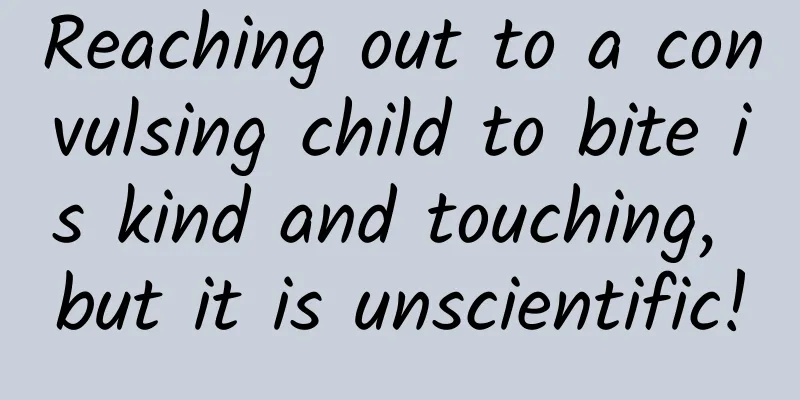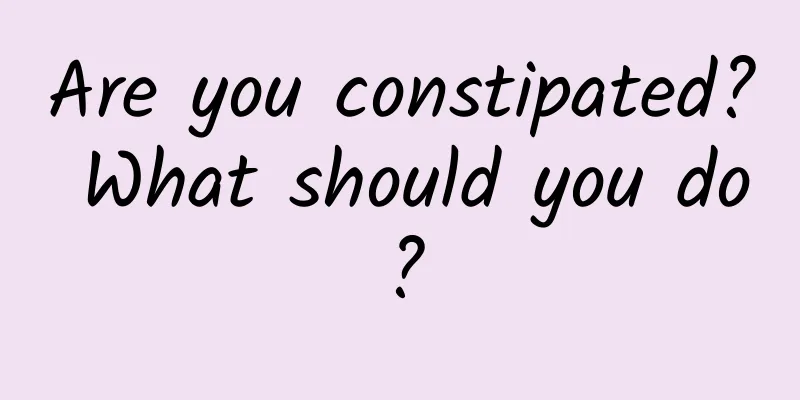Reaching out to a convulsing child to bite is kind and touching, but it is unscientific!

|
This is the 4964th article of Da Yi Xiao Hu Recently, a touching video of an auxiliary police officer rescuing a girl who had a sudden epileptic convulsion was widely circulated in the media and became a hot search. Many people who do not know the scientific knowledge of first aid praised it; although medical workers who know the scientific knowledge of first aid also praised the auxiliary police officer's enthusiastic rescue, they also made comments to remind people that it is unscientific to extend your hand to let a convulsing child bite you, which will not only hurt yourself, but also hurt the child, which is a hundred harms and no benefit! The media reported as follows: 1. There are many misunderstandings about children's convulsions. It is wrong to pinch them or bite them. Convulsions are a common emergency in children. In the pediatric outpatient and emergency department, we often see parents whose fingers are bitten by their children with convulsions, and we often see children whose philtrum is broken by their parents because of convulsions. Seeing that the media is still publishing touching stories of children with convulsions biting their hands, as a pediatrician, I feel that I have a great responsibility to popularize medical knowledge. For a long time, there has been a misunderstanding about the treatment of children's convulsions. If a child is convulsing and unconscious, pinching the Ren Zhong point can stop the convulsion and wake the child up; if a child is convulsing and his teeth are clenched, people are worried that the child will bite his tongue and lips, so they quickly use their hands to separate the lips and pry open the teeth. In fact, if a child is convulsing, pinching the Ren Zhong point, inserting fingers or teeth pads will not help the child's condition develop, but will hurt the child or the rescuer. Please remember: if a child is convulsing, it is wrong to pinch him or he bites you. It is also wrong to pry open the child's mouth and insert things like chopsticks and teeth pads. These actions are of no benefit to the children we want to protect! 2. Causes and Correct Treatment of Seizures in Children Convulsions are caused by abnormal discharges of nerve cells due to various stimuli, resulting in sudden involuntary contractions and twitching of the whole body or local muscle groups, often with or without impaired consciousness, commonly known as convulsions. Convulsions are more likely to occur in children due to the incomplete development of the cerebral cortex. Fever, low calcium, low magnesium, low sodium, epilepsy, intracranial infection, systemic poisoning and many other reasons can induce convulsions. Epilepsy and febrile convulsions are the two most common causes of convulsions in children, of which febrile convulsions are more common. Convulsions caused by febrile convulsions are related to a sudden increase in body temperature caused by febrile diseases. They are the most common convulsive diseases in children. Statistics show that 3-4% of children may suffer from febrile convulsions. The first onset age is between 6 months and 3 years old, with an average of 18-22 months. Boys are slightly more likely to have seizures than girls. The vast majority of children will no longer have seizures after the age of 5, and a few children will have seizures until the age of 7-10. Therefore, febrile convulsions are not only an emergency problem that pediatric medical care needs to face frequently, but also an emergency problem that parents of children and the general public need to face frequently. When a child suddenly convulses at home or in public places such as schools, kindergartens, shopping malls, and amusement parks, parents and friends must not panic. Staying calm can effectively help the child. Please call 120 emergency number for medical assistance as soon as possible, and put the child on a hard bed or on the floor, loosen the clothes, stretch the neck, lift the lower jaw, keep breathing smooth, keep the head tilted to one side to prevent vomiting and aspiration, and try to ensure that the child is warm and comfortable, and then wait for the arrival of the 120 ambulance. Remember, never put anything in the child's mouth, and don't press on the child's twitching limbs and head and neck! In the process of close observation and ensuring the safety of children's lives, if you find any abnormalities, you can call the 120 emergency doctor at any time. The 120 emergency doctor will also call you on the way to tell you how to do better. Never do anything unscientific to your children. Sometimes, if you do nothing and stay calm, the rain may stop and the sky may clear up in a while! Author: Qingpu Branch of Zhongshan Hospital Affiliated to Fudan University Pediatrics Chief Physician Xu Lingmin |
Recommend
Two ectopic pregnancies, one on each side
How many people wish to have a healthy baby and l...
50-year-old woman's menstruation cannot stop
When female friends reach the age of 50, it is mo...
Causes of poor liver function in women
We know that the liver has the function of detoxi...
Sleeping tips for children
If parents often stay up late, Children may also ...
What are the causes of chest pain in women?
If a woman experiences chest pain during menstrua...
What to do if the nipple doesn't come out
Under normal circumstances, after puberty, women&...
Who is the 9-valent vaccine suitable for?
The 9-valent vaccine is for women between the age...
"Medical" for the elderly | Scientific prevention and treatment of diabetic skin itching
Diabetic pruritus is one of the main skin complic...
A lot of white and sticky vaginal discharge
Vaginal discharge is a common condition for many ...
Causes of miscarriage
More and more young couples are too busy with wor...
What causes needle-like pain in breasts?
Nowadays, many women are prone to gynecological d...
What is the situation of excessive vaginal discharge and nipple pain?
Nowadays, many women are troubled by gynecologica...
Pregnancy test paper shows weak positive
Many women use test strips or pregnancy test stic...
What is yellow vaginal discharge before menstruation?
Women have a menstrual cycle every month, and the...
Is moxibustion effective for breast hyperplasia?
There are now many treatments for the disease of ...









